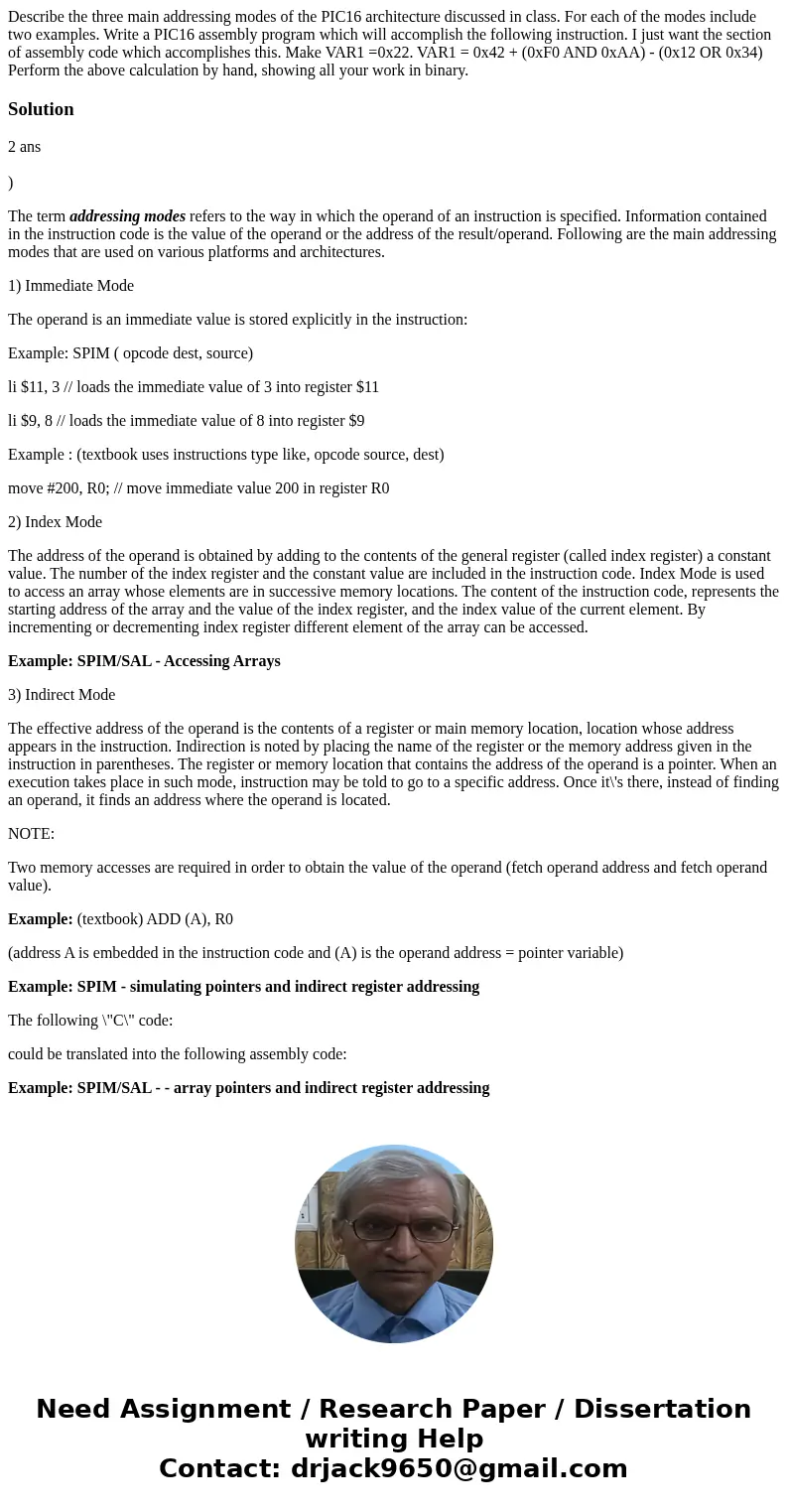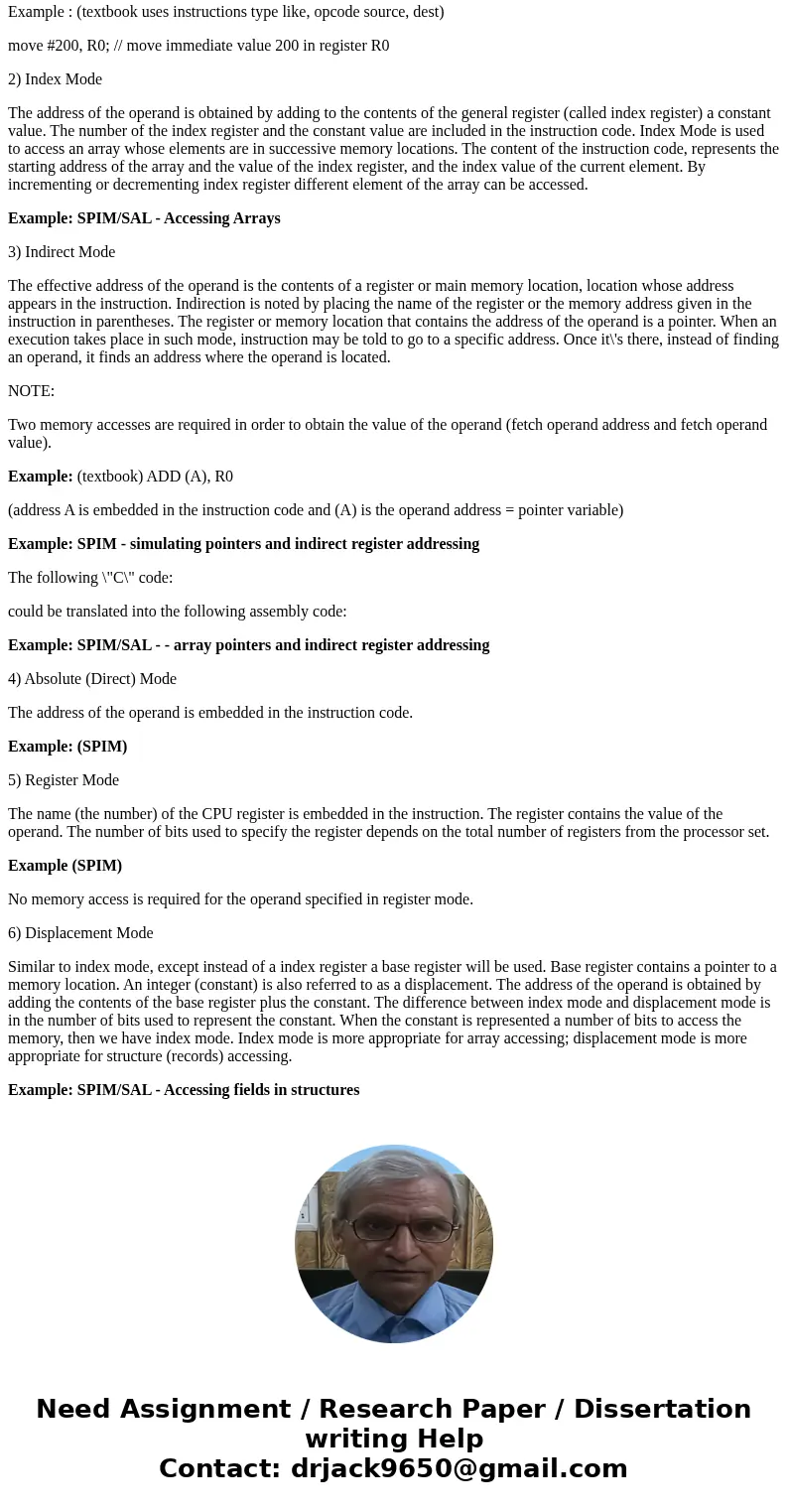Describe the three main addressing modes of the PIC16 archit
Solution
2 ans
)
The term addressing modes refers to the way in which the operand of an instruction is specified. Information contained in the instruction code is the value of the operand or the address of the result/operand. Following are the main addressing modes that are used on various platforms and architectures.
1) Immediate Mode
The operand is an immediate value is stored explicitly in the instruction:
Example: SPIM ( opcode dest, source)
li $11, 3 // loads the immediate value of 3 into register $11
li $9, 8 // loads the immediate value of 8 into register $9
Example : (textbook uses instructions type like, opcode source, dest)
move #200, R0; // move immediate value 200 in register R0
2) Index Mode
The address of the operand is obtained by adding to the contents of the general register (called index register) a constant value. The number of the index register and the constant value are included in the instruction code. Index Mode is used to access an array whose elements are in successive memory locations. The content of the instruction code, represents the starting address of the array and the value of the index register, and the index value of the current element. By incrementing or decrementing index register different element of the array can be accessed.
Example: SPIM/SAL - Accessing Arrays
3) Indirect Mode
The effective address of the operand is the contents of a register or main memory location, location whose address appears in the instruction. Indirection is noted by placing the name of the register or the memory address given in the instruction in parentheses. The register or memory location that contains the address of the operand is a pointer. When an execution takes place in such mode, instruction may be told to go to a specific address. Once it\'s there, instead of finding an operand, it finds an address where the operand is located.
NOTE:
Two memory accesses are required in order to obtain the value of the operand (fetch operand address and fetch operand value).
Example: (textbook) ADD (A), R0
(address A is embedded in the instruction code and (A) is the operand address = pointer variable)
Example: SPIM - simulating pointers and indirect register addressing
The following \"C\" code:
could be translated into the following assembly code:
Example: SPIM/SAL - - array pointers and indirect register addressing
4) Absolute (Direct) Mode
The address of the operand is embedded in the instruction code.
Example: (SPIM)
5) Register Mode
The name (the number) of the CPU register is embedded in the instruction. The register contains the value of the operand. The number of bits used to specify the register depends on the total number of registers from the processor set.
Example (SPIM)
No memory access is required for the operand specified in register mode.
6) Displacement Mode
Similar to index mode, except instead of a index register a base register will be used. Base register contains a pointer to a memory location. An integer (constant) is also referred to as a displacement. The address of the operand is obtained by adding the contents of the base register plus the constant. The difference between index mode and displacement mode is in the number of bits used to represent the constant. When the constant is represented a number of bits to access the memory, then we have index mode. Index mode is more appropriate for array accessing; displacement mode is more appropriate for structure (records) accessing.
Example: SPIM/SAL - Accessing fields in structures


 Homework Sourse
Homework Sourse